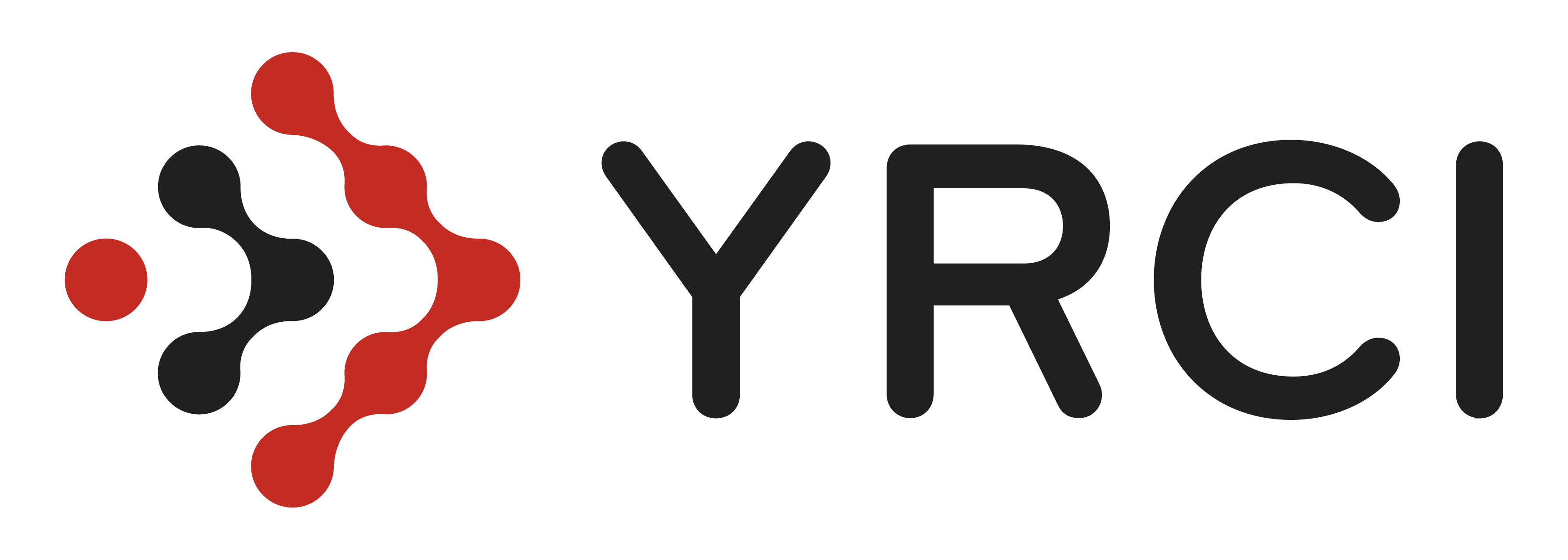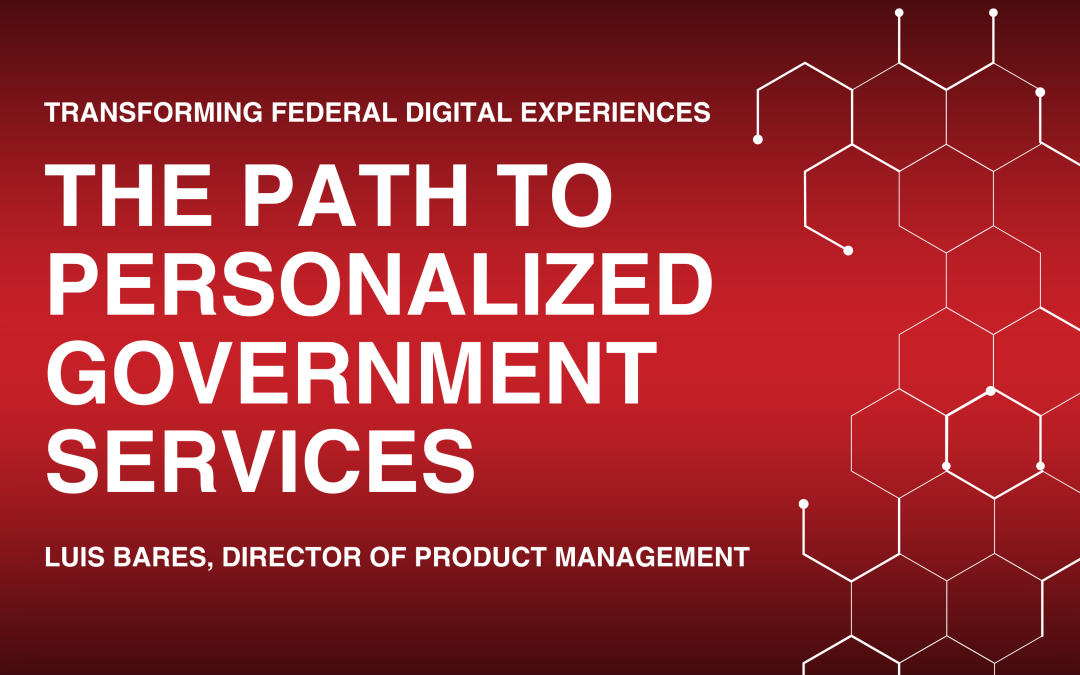Curating a personalized digital experience is not just a luxury but an expectation. According to recent studies, 71% of consumers want a consistent experience across all channels, and 33% of customers end their engagement with an organization because of its inability to deliver a personalized experience, highlighting the critical importance of customization and adaptability in digital solutions. The Federal Government is no different. Despite its long-standing authoritative data systems used by employees and the public to accomplish specific tasks, there are still opportunities for carefully curated digital experiences. At YRCI, we understand that customers’ needs are not created equal; therefore, personalizing experiences in our digital solutions is essential to our federal team. While personalization is crucial, it’s important to recognize the repercussions of getting it wrong. This is where customer experience research becomes indispensable. By tracking the customer and user journey throughout the workflow, we can uncover opportunities to craft a more tailored digital experience.
Designing Government Digital Experiences with the Customer in Mind
Product development must start and end with the customer experience to design a digital experience for the government that meets commercial expectations. It is crucial to understand your customers and end users and the problems you’re solving for them.
Analyze your audience: Before starting, consider opportunities to enhance, automate, or streamline a user’s workflow. Which routine tasks can seamlessly integrate into your product features to create a memorable user experience? Identify where cutting-edge technologies like artificial intelligence (AI) and machine learning can be effectively utilized and consider the sensitivities involved in their implementation. By considering these factors, federal agencies can transform their digital interfaces from functional tools into engaging, user-friendly platforms.
Seek feedback: Gathering feedback during the product design process is crucial for ensuring that the final solution meets user needs, preferences, and expectations, leading to higher satisfaction and adoption rates. This iterative approach involves continuously collecting and analyzing feedback, making necessary adjustments, and validating changes with users. By aligning solutions with real-world demands, it significantly enhances user satisfaction. It builds trust and reliability in government services by demonstrating a commitment to user-centric design. Ultimately, this fosters a more efficient and responsive public sector capable of adapting to the evolving needs of the community it serves.
Utilize advanced technology: Leveraging emerging technologies like AI and machine learning can revolutionize personalization and automation. These tools can deliver customized experiences, streamline processes, and eliminate redundant tasks by analyzing user behavior and preferences. However, it is essential to navigate these advancements with a strong awareness of ethical considerations and privacy concerns. Striking a balance between innovation and respect for user data can create cutting-edge digital experiences that uphold individual rights, setting a new standard for government interactions in the digital era.
Innovating within the Federal Government Human Resources (HR) Information Technology (IT) Domain
In a rapidly evolving technological landscape, Federal Government agencies must prioritize innovation and practicality in their product acquisition and development strategies. These agencies often face the challenge of balancing cybersecurity investments with the need to enhance digital experiences and ensure application accessibility. Fiscal prudence necessitates trade-offs that perpetuate the use of legacy IT systems that merely “get the job done.”
Initiatives such as FITARA have empowered Federal CIOs to take a more active role in the lifecycle management of mission-critical and institutional IT, fostering a deliberate enterprise architecture approach to IT investment planning. Additionally, FedRAMP has significantly advanced government operations by providing a marketplace of pre-vetted SaaS products that meet diverse security requirements. These initiatives are pivotal in allowing government agencies to maintain their existing IT infrastructure while integrating innovative solutions where they are most impactful.
Innovating in the HR IT marketplace demands a deep understanding of foundational work processes, a clear value proposition for products that enhance these processes, and sustainable lifecycle costs for any resulting technology. For example, as the Federal Government explores integrating AI to automate repetitive tasks and manage critical knowledge for its workers, some forward-thinking leaders are cautiously adopting AI to test initial concepts and address specific edge cases within ethical and technical boundaries. However, this cautious approach is less common in HR, where agency leaders must carefully avoid biases and ensure transparency and fairness. AI’s limitations underscore the need for balanced innovation: the technology must be advanced enough to prevent exacerbating biases, especially in crucial HR functions. Agencies can develop innovative, practical, and scalable solutions by prioritizing ethical considerations and user needs.
Acquiring modular, highly configurable applications allows the Federal Government to ensure that agencies can swiftly adapt to new requirements and policy changes while integrating the latest approved technology. This flexibility is vital in an environment where regulatory landscapes and operational needs. constantly evolve, and budgets tighten. Solutions should offer a sturdy foundation that supports customization without incurring prohibitive costs or causing extensive downtime. These solutions enhance efficiency, compliance, and overall satisfaction by equipping agencies with the tools necessary to tailor their HR operations. This approach empowers federal agencies to deliver HR services that are not only functional but exceptional, consistently meeting and exceeding the expectations of both employees and the public.
The HR IT landscape within the Federal Government is both unique and intricate, with the indispensable role of human involvement at its core. HR operations handle highly sensitive tasks involving personal data and critical decision-making that cannot be entirely automated. While AI demonstrates how innovation can be prudently managed, the broader challenge lies in integrating new technologies to enhance workflows while upholding ethical standards.
Innovation in this field demands a nuanced approach that balances technological advancement with practical application. It is essential to remain acutely aware of procedural sensitivities and ensure that any implemented technology adds clear and tangible value, either by automating complex workflows or significantly accelerating task execution. Additionally, the sustainability of lifecycle costs is a critical consideration for government entities. Solutions must be cost-effective at the point of implementation and throughout their entire operational lifespan, including maintenance, upgrades, and eventual decommissioning. It is also crucial to consider the potential need for training personnel to effectively use the new technology and the long-term implications for scalability and adaptability to future technological developments.
The Importance of Highly Configurable Solutions in HR
Government agencies are accustomed to slow change cycles and high customization costs, often leading to inefficiencies and frustrations. Despite all agencies adhering to the same overarching policies, each one manages HR in unique ways tailored to its specific operational needs. This variation calls for highly configurable solutions that can be customized to meet the distinct requirements and practices of each agency. These solutions must be meticulously designed to provide exceptional experiences for both public and employee users, ensuring seamless integration and user-friendly interfaces. By addressing these unique challenges, such solutions can significantly enhance productivity, streamline processes, and reduce overall frustration, ultimately leading to more efficient public service delivery.
Achieving product-market fit for Federal HR demands a profound understanding of complex policies and technology-enabled practices. YRCI stands out in this field, providing flexible and robust solutions that cater specifically to the unique needs of federal agencies. Our dedication to highly configurable technology allows agencies to implement our solutions seamlessly without incurring prohibitive customization costs. This adaptability ensures that each agency can attain peak efficiency and effectiveness in their HR operations, ultimately leading to improved service delivery and employee satisfaction. By leveraging our expertise and innovative approach, agencies can confidently and easily navigate the evolving landscape of federal HR.
At YRCI, we understand that federal government HR carries higher stakes than most commercial applications. Agencies handle sensitive personal data and intricate HR processes that require precision and reliability. Our service offerings are designed with flexibility and compliance at their core, allowing federal agencies to tailor their operations to meet specific needs without compromising efficiency or security. We are dedicated to high customer customizability, ensuring that every interaction—whether on desktop, mobile, or other platforms—delivers a seamless, customized experience that meets each agency’s unique requirements.
YRCI’s digital mission aims to help agencies maintain consistency and personalization across all touchpoints, even as policy requirements evolve. This approach enhances user satisfaction and boosts overall operational effectiveness at the agency level. Incorporating advanced yet adaptable technology enables federal HR departments to overcome the traditional challenges of slow change cycles and high customization costs while ensuring seamless integration across technologies. Our goal is to empower agencies to deliver top-tier HR services that are as dynamic and responsive as the needs of their employees and constituents.
Ready to transform your federal HR operations? Contact Colin Waitt, Director of Business Development, at cwaitt@yrci.com to discover how our tailored solutions can elevate your organization’s performance and efficiency. Our expert team will work closely with you to understand your unique challenges and implement strategies that drive results, ensuring your agency operates at its best.

Luis Bares
Director of Product Development
Luis is the Director of Product Management at YRCI, leading application development and technology innovation for the Federal Government Human Capital domain. Previously, he served as Senior Director of CX Strategy at Pfizer, enhancing global patient and healthcare provider experiences. During his 15 years at NASA, Luis spearheaded CX transformation and strategic experience design, elevating service delivery for key missions. He also led enterprise-scale IT deployments and R&D initiatives at the agency level, and supported NASA’s launch, landing, and ground processing activities for the Space Shuttle Program. As a founder and consultant for e-commerce start-ups, Luis specializes in designing intuitive, revenue-generating customer journeys.

